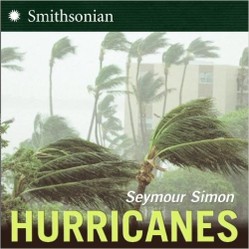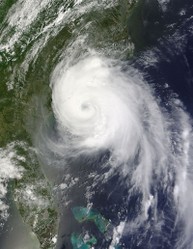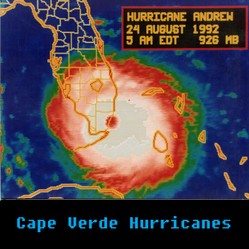Hurricanes are huge heat engines. Something has to start the system. Often this involves the Intertropical Convergence Zone, the area near the equator where the air from the two hemispheres collides and rises. This area acts like a front, and low pressure systems can form where the line of convergence buckles. The global air circulation has air moving towards the Intertropical Convergence Zone from the east, and angling in from the two hemispheres. If the Intertropical Convergence Zone is far enough away from the equator, and it does drift north during the northern hemisphere’s summer and south during the winter, the Earth’s rotation will cause the easterlies to change to a westerly direction, having air pass each other as it moves into the Intertropical Convergence Zone. The collision of the air from the two hemisphere causes the air to rise, and triggers severe thunderstorms.
Inro Image: Allowed by the Amazon affiliate program. The book is shown below.









 Mardi Gras Collectibleson 02/02/2023
Mardi Gras Collectibleson 02/02/2023
 Choosing a Christmas Table Centerpieceon 11/14/2022
Choosing a Christmas Table Centerpieceon 11/14/2022
 S.T.E.M. Study Models Enhance Science Learningon 09/01/2022
S.T.E.M. Study Models Enhance Science Learningon 09/01/2022
 Studying Mathematics, the Techniqueson 09/01/2022
Studying Mathematics, the Techniqueson 09/01/2022



Comments
Fantastic article . Incidentally , if others is requiring to merge some PDF files , my colleagues found a tool here http://www.altomerge.com/.
The NW of England hit about 12 C today. Some sun would be nice for August 1st. :)
I learned a lot about hurricanes today...drank a whole cup of tea while reading! Your knowledge on the subject is apparent. Thanks for sharing.
We hit 100 degrees yesterday, so some snow would be nice right now. But that seems extreme.
We now have the phrase Blizzicane in New England. It's basically a winter hurricane. I was on Cape Cod two years ago when we had 70 mph sustained winds and 95 mph gusts. The whole while it was throwing snow instead of rain. It was a very scary storm.
Thanks to both of you for the comments.
You and I, Veronica, live in broadly the same region, North West England. Here we rarely see a hurricane. When one hits Britain its track seems to be up the English Channel, coming ashore over the mid South and then tracking North over London, losing power as it goes. In the 1987 Hurricane we in the North West got the side of it, with a night of strong winds, but no real damage. The one exception to this was when a strong storm just below hurricane force came from the North Atlantic, and it caused some damage in our region, about twelve years ago.
This sort of article shows me just how much in life I have yet to learn. Fascinating and well explained. Obviously in the UK's frozen north, we are unaccustomed to hurricanes but they seem very frightening to witness. The satellite pictures are particularly useful.
Thank you.
Thanks, years ago as a physicist I attended a hurricane conference. My physics allows me to understand how things like hurricanes work. And, I have to translate science for students regularly.
What a wonderfully informative article! Millions of people live in hurricane prone areas, yet never bother to learn much more about them than 'they have big winds.'